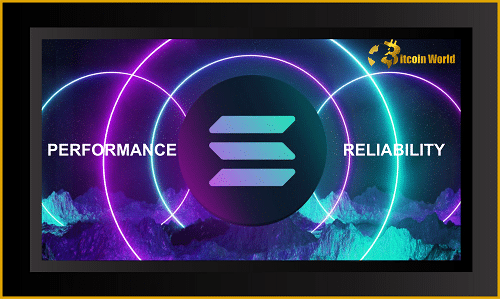Ever wondered what keeps crypto founders up at night? For Anatoly Yakovenko, the Co-Founder and CEO of Solana Labs, it’s the intricate dance between high performance and unwavering reliability on the Solana blockchain. In a recent interview, Yakovenko didn’t shy away from discussing the very real challenges Solana ($SOL) faces as it pushes the boundaries of blockchain technology. Let’s dive into what he revealed and what it means for the future of Solana and blockchain itself.
Solana’s Double-Edged Sword: High Performance and Demanding Users
In a candid conversation with Raoul Pal of Real Vision, recorded on August 22nd and released on September 2nd, Yakovenko highlighted a crucial point: Solana’s popularity is both a blessing and a curse. He stated, “This is our biggest challenge, which is maybe one that I like to have because all these challenges are coming because we have users.”
Let’s break down why user adoption is causing both excitement and headaches for Solana:
- Massive Transaction Volume: Solana handles a staggering amount of daily transactions. We’re talking about 30 million transactions on average, with peaks reaching an incredible 65 million! To put that in perspective, Yakovenko points out that this volume surpasses all other blockchains combined.
- Demand Exceeds Expectations: Such high usage exposes vulnerabilities that might not surface on less active networks. Solana is essentially stress-testing the limits of blockchain technology in real-time, which is both innovative and risky.
- Attack Vectors Emerge: The sheer volume of traffic also attracts malicious actors. Yakovenko mentioned instances of validators being bombarded with 10 million packets per second, pushing the network to its limits and revealing unexpected weaknesses.
The Vulnerabilities Exposed: What Happens When the Network Stumbles?
Yakovenko openly addressed the network outages Solana has experienced. He explained that under extreme load, bugs in validators can lead to memory overload and shutdowns. When a significant portion of validators fail (around a third, as he mentioned), the network can stall, requiring manual intervention to get back online. This is a stark contrast to the seamless operation users expect and highlights the ongoing development needed for truly robust blockchain infrastructure.
Think of it like this: Solana is like a high-performance race car. It’s incredibly fast and powerful, but it also requires meticulous tuning and can be more susceptible to breakdowns under extreme conditions compared to a more rugged, slower vehicle.
Bitcoin vs. Solana: Resilience in Different Forms
Yakovenko drew an interesting comparison with Bitcoin to illustrate this point further. He emphasized that Bitcoin is designed for extreme resilience, even at the cost of speed. Consider this table to understand the key differences in their design philosophies:
| Feature | Bitcoin | Solana |
| Block Time | ~10 minutes | ~400 milliseconds |
| Resilience Focus | Robustness, censorship resistance, even with significant node failures | High throughput, low latency, requiring consistent validator performance |
| Failure Tolerance | Can tolerate significant disruptions (e.g., hash power loss) with delayed block times | Less tolerant of validator failures due to faster block production |
As Yakovenko stated, “[Bitcoin] is designed to be extremely resilient… If there’s two hours between blocks in Solana, the network’s dead because it’s designed to make a block every 400 milliseconds… Once you make a faster network, the failure case is different than one on something like Bitcoin or Ethereum.”
This highlights a fundamental trade-off in blockchain design. Optimizing for speed introduces new challenges in maintaining network stability. Solana is actively working to address these challenges and enhance its resilience while preserving its high-performance capabilities.
Solana vs. Ethereum: The Ongoing Debate
The conversation around Solana often includes comparisons to Ethereum ($ETH), its most prominent competitor. Just recently, James Mullarney from InvestAnswers, a popular YouTube channel, delved into this very comparison in a video posted on August 28th. Mullarney assessed both blockchains across several key metrics:
- Speed: How quickly transactions are processed.
- Costs: Transaction fees and overall expenses.
- Technology: Underlying architecture and innovation.
- Ecosystem: The breadth and depth of applications and projects built on each platform.
- Daily Active Users (DAUs) & DApp Breadth: Real-world usage and the variety of decentralized applications available.
While Mullarney’s detailed comparison is worth exploring (check out his YouTube channel!), Yakovenko’s interview provides crucial context. Solana is pushing the envelope in terms of speed and transaction volume, but this journey comes with growing pains. Addressing network stability and resilience is paramount for Solana to achieve its vision of becoming a truly mainstream blockchain platform.
The Future of Solana and Blockchain Scalability
Anatoly Yakovenko’s insights offer a transparent look into the realities of building cutting-edge blockchain technology. Solana’s journey is a testament to the ongoing evolution of the crypto space. The challenges Solana faces are not unique to them; they are indicative of the broader industry’s push towards scalable and user-friendly blockchain solutions.
Key Takeaways:
- Scalability is a Balancing Act: Achieving high throughput without compromising reliability is a complex engineering challenge.
- User Adoption Drives Innovation: Real-world usage exposes vulnerabilities and pushes developers to create more robust systems.
- Transparency is Crucial: Open discussions about challenges, like Yakovenko’s interview, build trust and foster community-driven solutions.
- Solana is Evolving: The network is actively being improved to address the identified weaknesses and enhance its long-term stability.
As Solana continues to refine its technology and address its challenges head-on, it remains a significant player in the blockchain landscape. The pursuit of scalability and resilience is a marathon, not a sprint, and Solana is clearly in it for the long haul, learning and adapting every step of the way.
Disclaimer: The information provided is not trading advice, Bitcoinworld.co.in holds no liability for any investments made based on the information provided on this page. We strongly recommend independent research and/or consultation with a qualified professional before making any investment decisions.


